Consider, for a moment, Romeo and Juliet (bear with us). Romeo and Juliet is a story everyone knows. Even if you’ve never studied the play (though most of us with a high school education have), it’s become a cliche of pop culture to refer to all love stories as Romeo and Juliet, even though it’s arguably the worst love story ever, given the ending (and the beginning, and the middle…) Yet the star-cross’d lovers will live on in an eternity of retellings. Something about those two young lovers has gripped our collective psyche in the English-speaking world.
Cinderella is the Romeo and Juliet of fairy tales. “Cinderella story” is a synonym for “rags to riches story” that everyone knows. The 1950’s Disney Cinderella, in particular, is the iconic telling that everyone seems to default to, although there are plenty of retellings which are also well-loved by the public. In fact, this post is currently our most-viewed post ever, at the time of editing.
So when Disney chose to create a live-action version of this tale, surely no one was surprised – nor were we surprised when they decided not to change the basic narrative like they did with Sleeping Beauty. There’s still room for comparison, though, and we’ll begin with our protagonist.
Cinderella: 1950
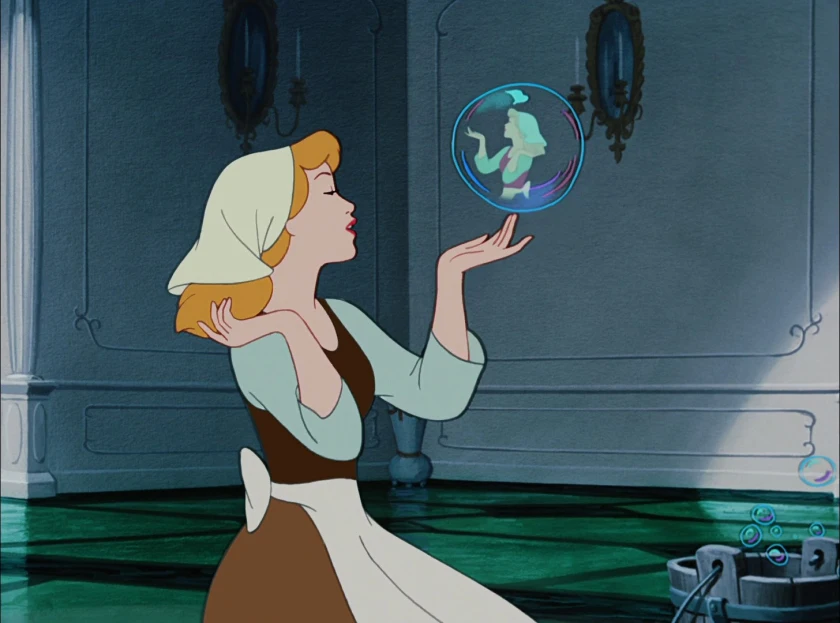
One of the most common lazy complaints about Disney is that the princesses are bad role models. We’ve said again and again that princesses don’t have to be role models, and we stand by it – but today, three must admit that as a little girl, she looked up to Cinderella, and she believes fervently that this was not a bad thing. Observe.
Cinderella in 1950 was poised and has a quiet strength. Although her primary virtue seems to be the ability to suffer in silence, the thing that stands out more, given the movie’s obsessive focus on the Mouse Subplot, is her kindness and compassion for all creatures except Lucifer (Okay, okay, she’s sort of nice to Lucifer too. As nice as he deserves. He’s our favourite character so we’re biased on this). As we learned from Harry Potter, the ability to love and be compassionate despite facing lifelong adversity is a strength in its own right.
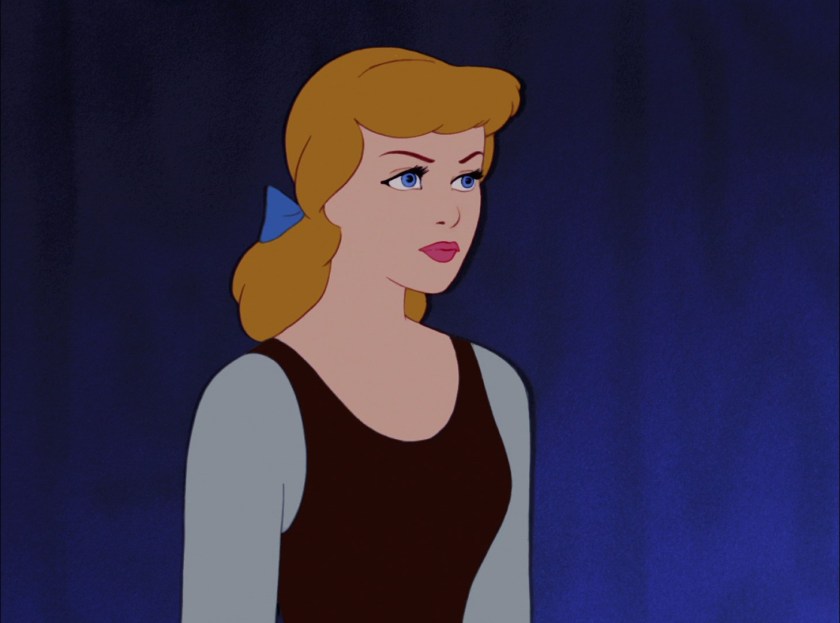
Suffering in silence was the whole point of the original Cinderella story, and that is worth considering. However, when re-watching this movie, especially in contrast to the newer live-action version, we noticed that Cinderella was not at all meek. She makes her strength known every time she says “yes, Stepmother” in a level voice. We can’t think of another example in Disney in which the leading lady deadpans the villain – Usually they’re in a place of vulnerability, like Snow White, Ariel, or Aurora, or they imagine that the villain loves them, like Anna or Rapunzel. Occasionally, they fight back in one way or another, like Tiana, Mulan, Pocahontas, or Jasmine. The closest thing to Cinderella’s quiet strength is Belle’s *eye roll* at Gaston, but even she can’t hold a candle to Cinderella.
Strong & silent is considered to be a masculine personality – and in fact, INTJ is the rarest personality type among women, which perhaps is why three was so taken with Cinders of the 1950’s. She’s a surprisingly unique person considering that she’s the title character of the most iconic fairy tale of all time.
Cinderella: 2015
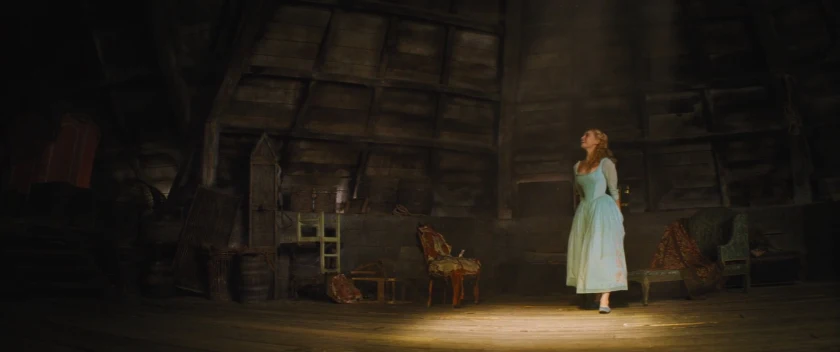
Ella of the 2015 movie maintains the goodness and compassion of her 1950’s counterpart, and as we see, this remains the cornerstone of the character’s virtue and worthiness for the Prince. However, our definition of virtue seems to have changed, because this character has a vastly different feel.
Unlike Cinderella of the 1950 film, Ella lacks poise. She’s an honest country girl, where Cinderella is more of a lost member of the aristocracy. Ella is an open book about how she feels – and she feels a lot. It shows in how the ladies of the house take advantage of her and push her around. They know they are hurting her, and they revel in it. While the animated Cinders speaks with barely-masked scorn, 2015 Ella is barely holding back tears.
Now, we would never argue that having feelings makes you weak – this character has just as much courage as Cinderella of the 50’s. Instead, this reflects a trend towards characters learning to accept their feelings, which probably reflects a greater trend towards wellness and an understanding of the importance of mental health. Consider Elsa, who was easily the most poised woman in recent Disney, letting her hair down (literally) and singing Let it Go, giving the entire world goosebumps while also giving rise to a bunch of ADORABLE *cough* videos of people’s kids singing Let it Go. Consider Riley of Inside Out, obviously. Consider Wreck-It Ralph saying “I’m bad, and that’s good” while plummeting to his Disney Death. Consider Mike Wazowski coming to terms with the fact that he’s not scary. Consider Paul Bullock’s piece on Modern Disney and find the rest of the examples of Disney preaching for self-acceptance. Our ideas of what a children’s story should be have changed, and with them, Cinderella changed too.
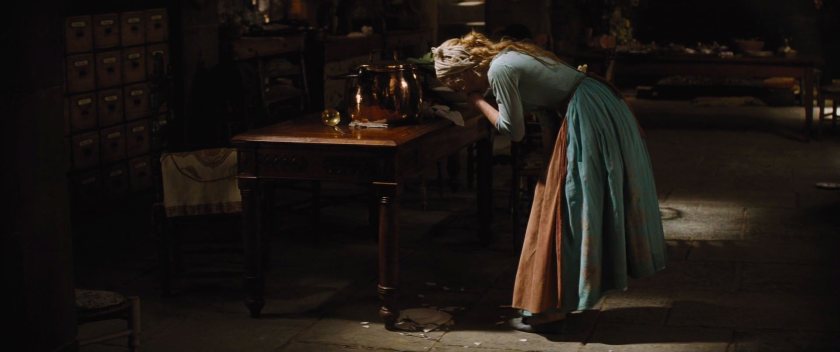
This means less representation for the strong and silent women in the world (boo) but more celebration of people who have feelings (yay!) While princesses of the Golden Age were forced to accept their situations with forlorn looks on their faces, while refusing to talk back, princesses from the Renaissance and forward have started stepping up for what they want out of life (with the exception of Belle). Ella of 2015 has more in common with these newer princesses than she does with her 1950’s predecessor. Although she is still a passive character, as per Cinderella tradition, she is much more honest about the fact that she feels less-than-satisfied with her situation. As a result, we get a character who feels more human, displays some vulnerability, and evokes more of an emotional response.
Step-Family: 1950
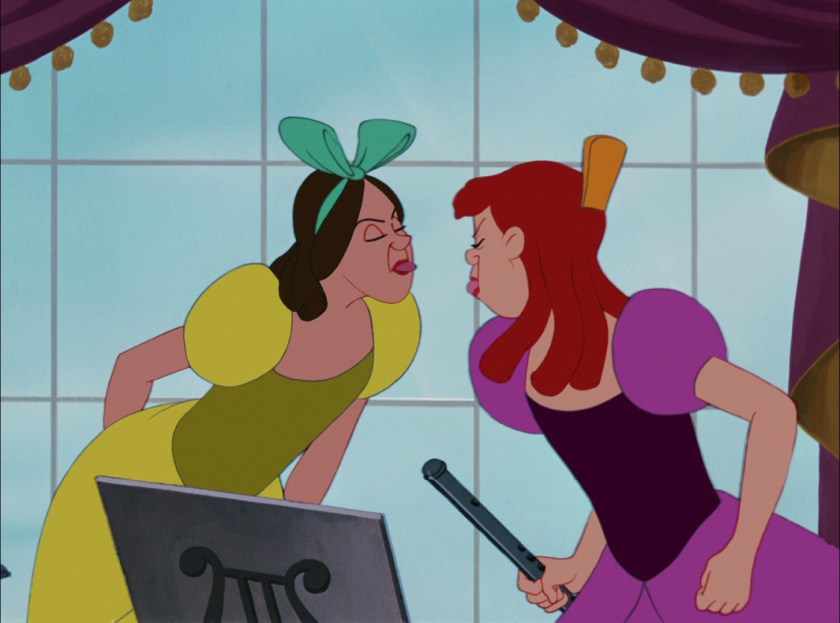
Disney famously took the “ugly” in Ugly Stepsisters a little too literally in 1950. They made the Stepsisters caricatures for comic relief – even though they are pushing Cinderella around, it’s funny because they’re ugly and incompetent. Nice. Having said that, questionable though it may be, it was also necessary to make those parts more lighthearted, because child abuse doesn’t fit the tone of a Disney Princess story, and they had to make it palatable for children and parents.
But they could have done it without the “HA HA THEY’RE UGLY” spin, with a little more thought, and it’s a shame that they settled for this.
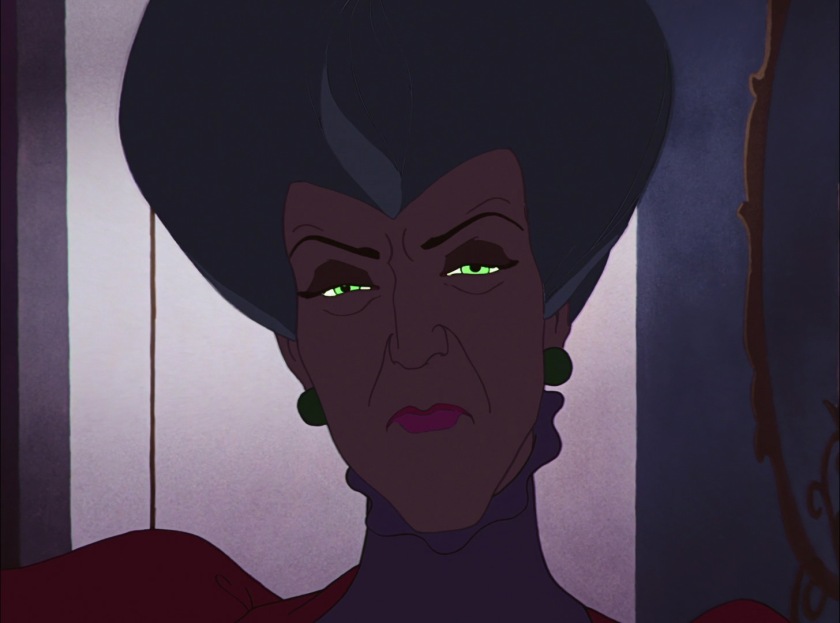
Lady Tremaine is a villain we love. They chose not to make her comical like her daughters, and instead made her a realistic evil. Here’s a woman with two daughters and no money, saddled with a stepdaughter who is COMICALLY more beautiful, talented, and poised than they are. Obviously, they’re all going to die in squalor because of Cinderella, so something had to be done. Was this over the line? Yeah. Very much so. But we have a slight level of sympathy for a lady who can’t build a life for herself in the confines of her society, and has to become a villainess just to get by. And then she fails. We wonder what became of these women, but the movie doesn’t want us to.
Step-Family: 2015
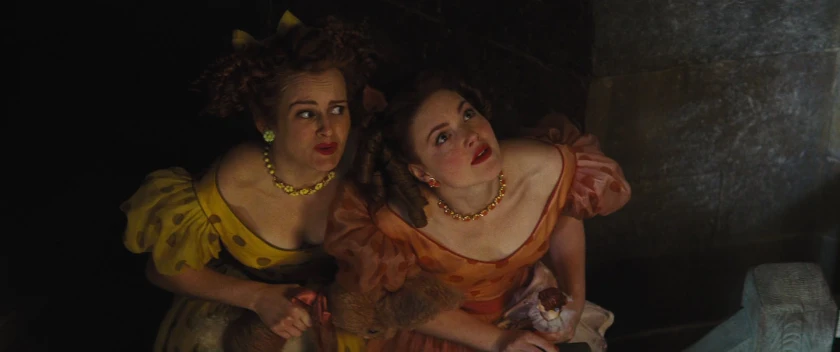
The 2015 movie is true to the animated depictions, except that the Stepsisters weren’t ugly, they were just gaudy and awkward and incompetent. So, that’s… better?
We have one very important question to ask, about this family. Given how shrewd Lady Tremaine is, why didn’t her daughters already secure good matches? We suspect that it’s because their dresses are ridiculous. Why didn’t she advise them to get less stupid ones?
I mean, really.
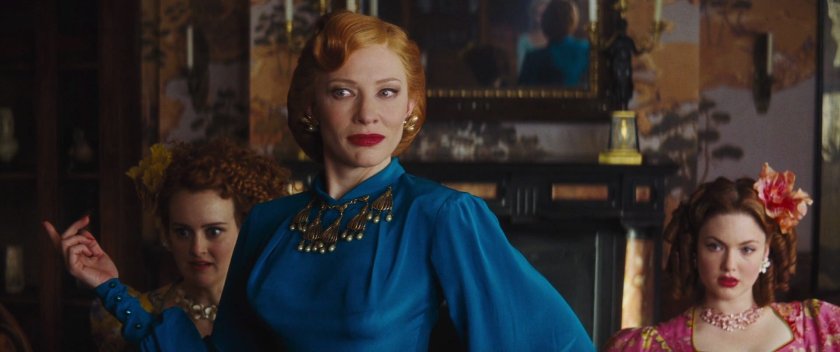
Lady Tremaine is very similar to the animated Lady. She’s less conservative in appearance, and the movie bothers to flesh out the true reason behind her villainy a little bit – she married for love, her husband died, and now she needed to do whatever she could to find matches for her daughters because that’s literally all women were good for. It’s a sad story.
She’s still evil though, and we’d still be afraid to bump into her in a dark alley – that is, if we were somehow between her and something she wanted, like another hapless prince.
Fairy Godmother – 1950
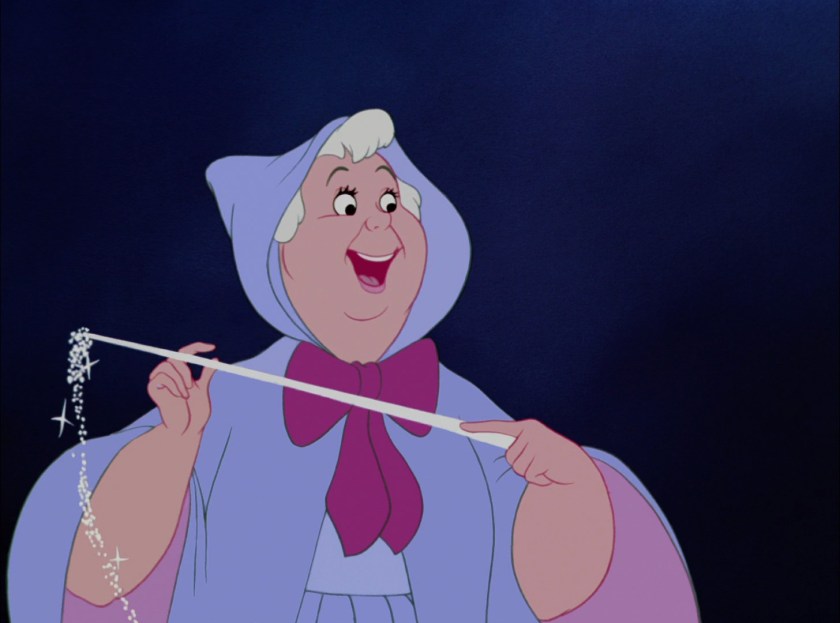
The 1950 Fairy Godmother was matronly, wearing a hooded cloak, with white hair. She sang whimsical songs and scolded Lucifer, who is a very unfortunate cat.
We think it’s interesting that in the 1950 film, they were more comfortable including female characters who were visibly old. Both the Fairy Godmother and the Evil Stepmother have white or grey hair, whereas in the live action, both characters are significantly younger-looking. Why, Disney?
She does flake out about the dress at the end. We find this all very charming. Cinderella, apparently, finds it charming too. She shows surprise at first, but her poise wins out and she just acts like this happens to her every day and she’d just like to look presentable when she goes out, please.
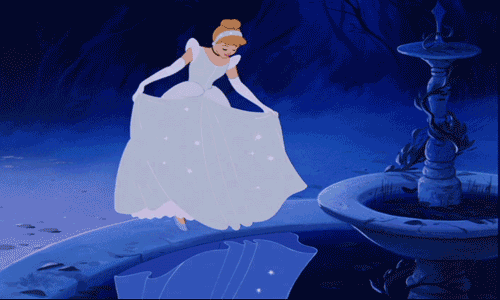
Fairy Godmother – 2015
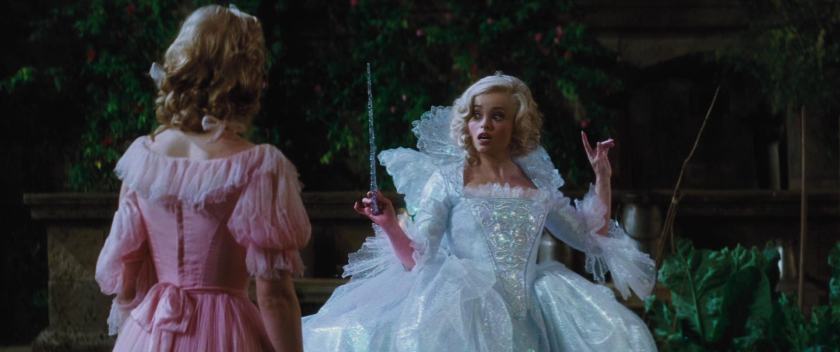
Our 2015 fairy godmother was dottier than the original – although we think they were just building on an existing character trait, there. She’s more whimsical and less matronly. Much less matronly.
The difference in appearance is interesting, as is her manner of appearing. While Cinders’ godmother appears while she’s crying, and begins to comfort her, Ella’s godmother appears in disguise and tests her – asking her for a bowl of milk. When Ella agrees and brings her the milk, although it’s not specifically said that she “passed”, the godmother does choose not to reveal herself until after she’s accepted Ella’s generosity.
If she had said no, this probably would have turned into Beauty and the Beast.
Anyway, the transformation scene has a lot more to it in this version – maybe because they had to do more work to make us suspend disbelief. Ella was breathless the entire time, and is very open about her amazement, unlike her animated counterpart.
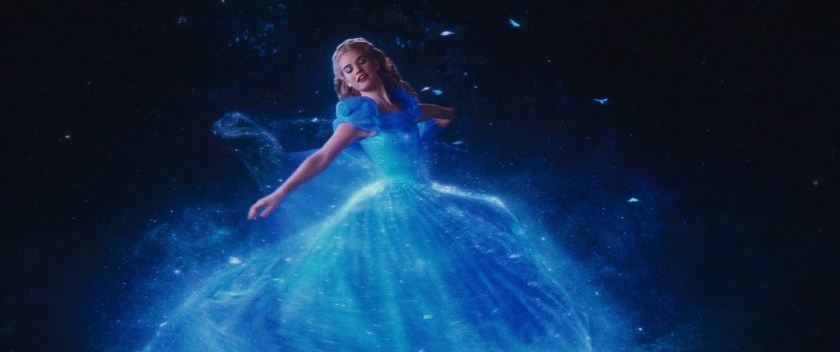
The Prince – 1950
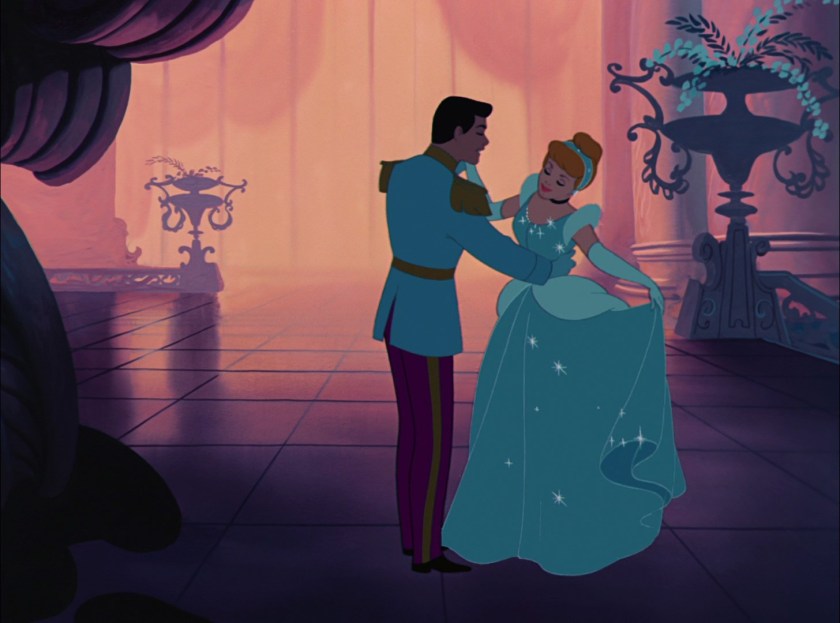
We know exactly one thing about this Prince, which is that his father is positively desperate to marry him off so he can start breeding little heirlings.
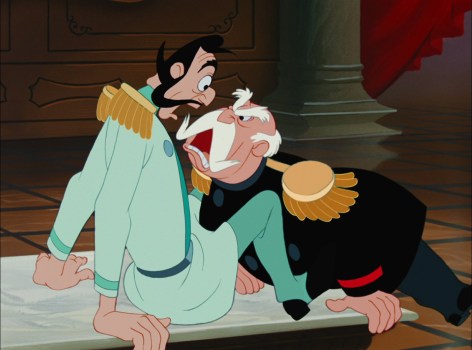
Cinderella falls in love with his lack of personality, for some reason, and that’s about all we know about that.
The Prince – 2015
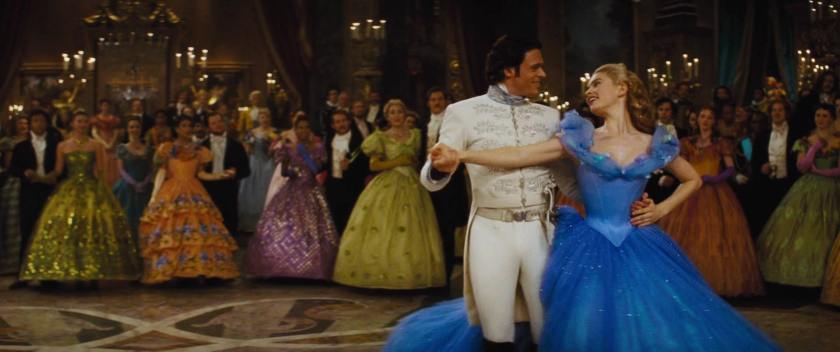
Kit/Robb Stark is our prince, and he is a very nice prince.
They decided to add that tired old “you have to marry for status and not screw over the kingdom, son” “NO DAD YOU’RE NOT THE BOSS OF ME” thing to this story. Robb’s already done this, by the way, and it didn’t end well for him.
IT DID NOT END WELL AT ALL.
He also has numerous good traits, and he will make a good leader, but he has a lot to learn. That was a welcome addition, because Disney movies never seem to touch on the fact that it actually takes a certain level of competence to run a government (see: the Sultan).
We like this couple, though. While Cinderella and Prince Whatever of the animated version are kind of blah characters, and we don’t know much about them other than their statuses in the kingdom, Kit and Ella are genuinely good people who like each other because they see the other’s goodness.
We think it’s worth noting that the 2015 movie felt the need to justify Ella’s love for Kit by having him pretend not to be a prince. Would it have been less meaningful if she had known? Is it unacceptable for her to knowingly fall in love with a prince? Now, Cinderella of the animated movie didn’t know either, but we don’t think she would have hesitated to dance with him even if she did know.

Kit also personally rescues Ella by telling his Grand Duke off for ignoring her singing in the tower, which was an exciting moment that could have been added to the animated film instead of that TEDIOUS STAIR SCENE. And he recognizes Ella without trying the shoe on her. Good for him.
Concluding Notes
Taking the cat & mice subplot out of the equation, Cinderella of 1950 is a classic-but-boring love story dressed up with iconic music and visuals that remain enchanting to this day. Both Cinderella and her Prince are blank slates as characters, reserved and poised people who we know to basically have good intentions. Cinderella, of course, also has the nurturing side to her personality which is key to her value as a person.
Perhaps it was simply by limiting the mouse scenes, but the live action version of this movie brought both of these characters to life. Ella and Kit have feelings, insecurities, and values that we know of. We also see them get to know and like each other, which is now an entirely necessary part of any love story, albeit less efficient.
The live action was a needed interpretation, and, we hope, a herald for more needed interpretations to come.




Love this! You’ve made me really keen to see the 2015 movie❤️
[…] week we compared Disney’s 1950 animated Cinderella to their 2015 live-action Cinderella. This week […]
[…] she finds out, she simultaneously finds out that he’s also looking for her, to marry her. Can we blame her for wanting to seize this opportunity, after watching 60 minutes of what her life is like with her […]